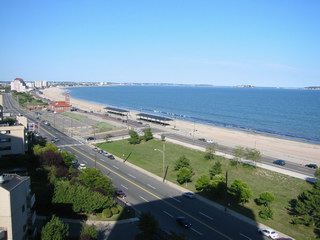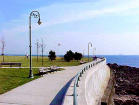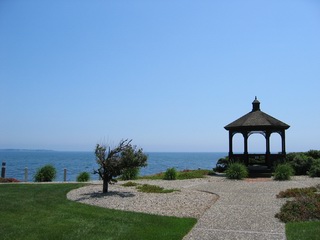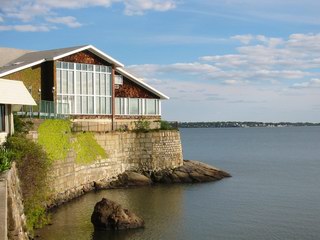
|
| Incorporated: |
As a town: 1629; as a city: 1850 |
| County: |
Essex |
Town size:
|
10.47 sq. miles
of land |
| Population: |
89,050 |
Population density:
|
8,505 people
per sq. mile |
| Residential tax rate: |
$16.46 |
| Avg. single-family tax bill: |
$2,291 |
| Avg. single-family property value: |
$139,174 |
| Form of government: |
Mayor, Council |
| Annual spending: |
$176,610,164 |
|
Note: Population data from US Census 2000. Tax rate from FY 2001. Average tax bills and property values from FY 2001.
|

|
|
The City of Lynn was settled by colonists from the New England Company in Salem in 1629. Early settlers relied primarily on family farming and shell fishing although an iron works was established in the city in 1643. Leather tanning became a major industry very early on and by 1775 there were a string of tanneries along Black Marsh Brook, called Tanney Brook, to the harbor. When the MBTA was extended from Boston to Salem in 1837, it went through Lynn, encouraging growth in the shoe industry and a factory district was created as well as shoe workers' neighborhoods of boardinghouses. The Civil War brought great prosperity to the city and further growth of the shoe factories. Even the fires of 1869 and 1889, which destroyed much of the central business district from Central Square to Broad Street, didn't stop expansion. The gutted buildings were simply replaced by five and six story shoe factories. While Lynn developed its major industrial capacity, handsome summer estates were being built along its shore by the middle of the 19th century. These established the city as a fashionable Boston resort area. At least a dozen large shore estates were built and other land was subdivided for increasingly suburban residential development. When Lynn Shore Drive was opened in 1910, it encouraged the development of high rises to take advantage of the shore view. Lynn, now the largest city in Essex County, is an urban manufacturing and commercial center, densely populated and culturally diverse. Residents are proud of the city's long history, which parallels the history of New England as a whole.
Information from Massachusetts Department of Housing and Community Development.
Location: Eastern Massachusetts on the northern shore of Massachusetts Bay. Bordered by Saugus and Lynnfield on the west, Peabody and Salem on the north, Swampscott and the Atlantic Ocean on the east, and Nahant and Revere on the south. Lynn is 9 miles north of Boston; 51 miles east of Worcester; 95 miles south of Portland, Maine; and 229 miles from New York City.




